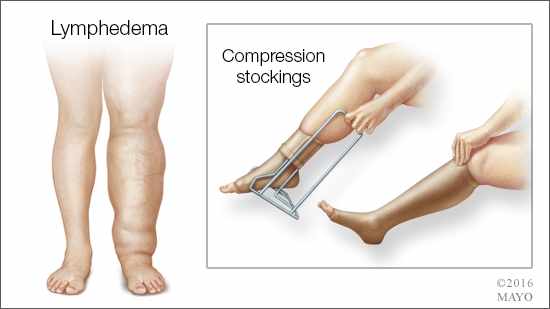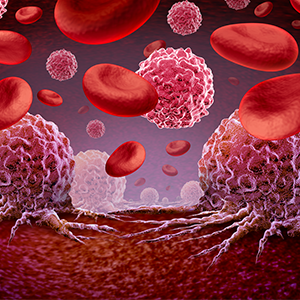-
Mayo Clinic Q and A: Lymphedema — when is surgery indicated?

DEAR MAYO CLINIC: What do you recommend for someone who has lymphedema in the leg that doesn’t respond to wraps or compression? At what point is surgery to reduce the swelling a reasonable option?
ANSWER: The mainstay of treatment for lymphedema is conservative therapy that doesn’t involve surgery. Lymphedema treatment usually starts with wraps and compression. If that doesn’t work, other nonsurgical options are available. If there’s no improvement after thorough use of conservative treatment, then it may be necessary to consider surgery.
Lymphedema affects your lymphatic system, part of your body’s immune system. Your lymphatic system circulates lymph fluid throughout your body, collecting bacteria, viruses and waste products. It carries this fluid and these substances through your lymph vessels and into the lymph nodes. The wastes then are filtered out by infection-fighting cells in the lymph nodes.
Lymphedema happens when your lymph vessels cannot adequately drain lymph fluid. That usually happens because of damage to or removal of lymph nodes from an infection, trauma, cancer treatment or surgery. When lymph fluid doesn’t drain normally, the excess fluid builds up and causes swelling, most often in an arm or leg. If it’s not promptly and properly treated, the accumulation of lymph fluid eventually can lead to solid deposits of fat and fiber in the areas affected by lymphedema. That can make the condition more difficult to treat effectively and therefore more likely to require surgery.
Compression therapy usually is the first line of treatment for lymphedema. It involves wrapping the entire arm or leg in a snug bandage or compression garment to reduce swelling and encourage the flow of lymph fluid.
If wrapping alone isn’t enough, an approach called complete decongestive therapy may be useful. That approach includes wrapping and other techniques, such as massage, exercise and skin care, to ease swelling. Your doctor also may recommend a device that puts pressure on your limb to move lymph fluid. These compression devices usually consist of a sleeve worn over the arm or leg connected to a pump that intermittently inflates to provide pressure.
If you don’t see improvement with decongestive therapy, then surgery would likely be the next step in treatment. Some of the surgical techniques used for lymphedema must be performed when the condition is still in the fluid phase, before solids are deposited in the affected area. A delay in treatment that allows solids to accumulate may require more complex surgical approaches and can make lymphedema more difficult to treat over time.
Three surgical techniques that can be used to treat lymphedema while it’s still in the fluid stage are vascularized lymph node transfer, lymphaticovenous anastomosis and lymphaticolymphatic bypass.
The first, vascularized lymph node transfer, releases scar tissue that’s blocking the lymph fluid. It also transfers a soft tissue flap from a donor into the affected area. This flap contains lymph system components. The second surgical technique, lymphaticovenous anastomosis, connects existing lymphatic vessels to tiny veins located nearby, allowing the extra lymph fluid to drain directly into the veins. The third approach, lymphaticolymphatic bypass, connects normal functioning lymphatic vessels from a donor directly to the lymphatic vessels of the affected limb.
When lymphedema progresses to the point that solids start to accumulate in the limb, other surgical procedures must be used to remove that material. Those techniques don’t address the underlying cause of lymphedema, though, so you still need compression or other therapy after that surgery. In some cases, surgery to remove the solids can be combined with one of the other surgical techniques mentioned earlier to resolve lymphedema.
The right surgical procedure for lymphedema varies depending on your individual situation. With proper diagnosis and evaluation, however, surgical techniques can be used to treat lymphedema safely and effectively in many people when combined with integrated lymphedema therapy. — Dr. Kevin Cohoon, Cardiovascular Diseases, Mayo Clinic, Rochester, Minnesota
Related Articles







